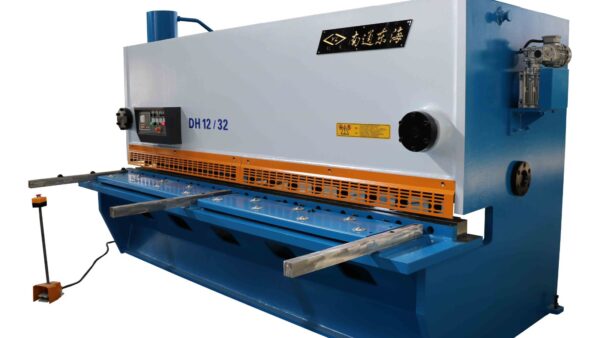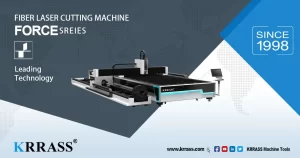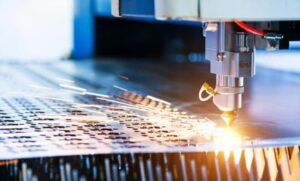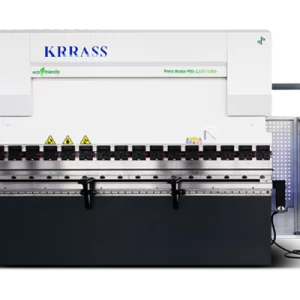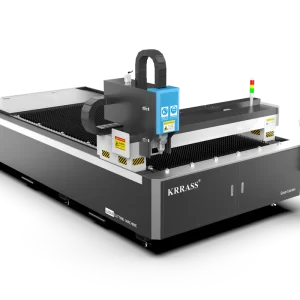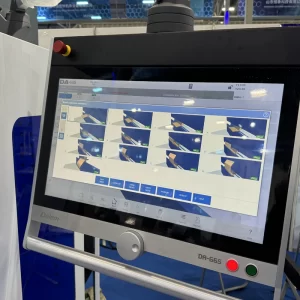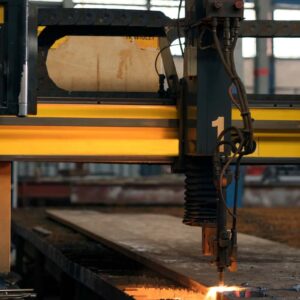V-grooving is a technique used in metal fabrication to create precise bends in sheet metal. It involves cutting grooves along the bend line, which allows for small outside bend radii and accurate dimensional results. Here’s how you can improve V-groove accuracy:
Table of contents
1. What is V-Grooving Machines
3. Optimizing V-Grooving: Strategies for Precision and Efficiency
4. Material Thickness Management in Optimizing V-Groove Precision
5. Consistency in Dimensional Integrity: Optimizing V-Groove Precision
6. Heat Management in V-Grooving: Ensuring Precision Amidst Temperature Challenges
7.Maintenance and Feedback Loops
1.What is V-Grooving Machines
The V Grooving machine, a cornerstone in precision sheet metal fabrication, represents a significant leap in the industry’s capability to manipulate metal. This machine, often referred to as a V Groover, is not just a tool but a sophisticated piece of engineering that has revolutionized how metal sheets are prepared for bending and forming.
Introduction to V Grooving Machines
V Grooving machines, also known as V Groovers, are specialized tools in the metalworking industry designed for creating precise grooves on metal sheets. These machines are pivotal in ensuring the metal can be bent with accuracy, which is crucial for both the structural integrity and the visual appeal of the final product. The grooves made by these machines are characterized by their ‘V’ shape, which is essential for facilitating sharp, clean bends.
The Significance of Precision Grooves
The accuracy of grooves made by V Grooving machines is not just a matter of aesthetic quality; it is also about the functionality and fit of the metal components. In industries where precision is paramount, such as aerospace and medical equipment manufacturing, the grooves’ depth and angle determine how well parts will fit together and function as intended.
The Mechanism of V Grooving
V Grooving machines operate using a set of rotary cutting tools that carve out the ‘V’ shaped groove into the metal sheet. This process involves a high level of control over the tool’s movement to ensure that the groove’s depth and angle are consistent throughout the length of the metal sheet. The ability to control these parameters allows for a high degree of customization in the bending process, enabling manufacturers to create complex shapes and designs.
Applications in Industry
The use of V Grooving machines is widespread in industries that require precise metal bending, such as architectural metalworking, where they are used to create intricate designs for building facades, and in high-end cabinetry, where the clean angles and sharp bends contribute to the furniture’s luxury aesthetic. Additionally, V Grooving finds its application in the fabrication of HVAC systems, where precise bends are necessary for the efficient functioning of the system.
Advancements in V Grooving Technology
The technology behind V Grooving machines has seen significant advancements over the years. Modern machines are equipped with computer numerical control (CNC) systems, which allow for even greater precision and automation. These CNC V Groovers can be programmed to make consistent grooves at specified intervals, reducing the margin for error and increasing production efficiency.
2.Software Assistance
In the realm of sheet metal fabrication, precision is paramount. The advent of software assistance has revolutionized the industry, particularly in the domain of V-grooving. This meticulous groove-cutting technique, essential for the precise bending of metal sheets, has been greatly enhanced by the integration of digital tools. These advancements have not only improved accuracy but have also streamlined efficiency and bolstered process optimization. In this detailed exposition, we will explore the multifaceted role of software assistance in V-grooving, examining its impact on various aspects of the process.
I. CAD/CAM Simulation: The Digital Blueprint
A. Virtual Prototyping: The Foundation of Precision
The journey of precision in V-grooving begins with virtual prototyping. Computer-Aided Design (CAD) software serves as the architect, allowing for the creation of intricate 3D models that represent the metal sheet and the desired grooves with utmost accuracy. These models are the blueprints, detailing every groove angle, depth, and the material’s inherent properties. This stage is critical, as it sets the stage for the subsequent fabrication process.
B. Predictive Analysis: Anticipating Challenges
Predictive analysis stands as the guardian of quality in V-grooving. Finite Element Analysis (FEA) is employed to forecast stress distributions that occur during the bending process. This foresight enables the identification of potential weak points, allowing for adjustments in groove parameters to fortify the metal sheet against such vulnerabilities. Additionally, software tools can predict the degree of springback—a common phenomenon where metal attempts to return to its original shape post-bending—enabling preemptive modifications to ensure the final shape adheres to the precise specifications.
II. Toolpath Optimization: Charting the Course
A. CAM Strategies: The Navigator
Computer-Aided Manufacturing (CAM) software emerges as the navigator, charting a course for the V-grooving machine’s toolpath. It takes into account the tool’s geometry, the material’s properties, and the machine’s capabilities to generate a path that ensures the groove is executed flawlessly. This strategic planning is crucial for avoiding collisions and ensuring that the tool moves harmoniously with the metal sheet, preserving both time and resources.
B. Feed Rate Optimization: The Balancing Act
The feed rate during V-grooving is a delicate balance that must be maintained to achieve precision. Dynamic feed control allows for the adjustment of feed rates in real-time, based on the complexity of the groove. Deeper grooves or steeper angles necessitate a slower feed rate to maintain the integrity of the cut. Adaptive feed algorithms are at the forefront of this process, making real-time adjustments to optimize material removal while simultaneously managing heat buildup, thus preserving the quality of the groove.
III. Process Monitoring and Feedback: The Cycle of Improvement
A. Real-Time Data Acquisition: The Pulse of the Process
Machine sensors are the pulse of the V-grooving process, providing real-time data on tool temperature, cutting forces, and vibrations. This information is crucial for monitoring the health of the operation. Deviations from the norm trigger alerts, allowing for immediate intervention. Similarly, non-contact sensors keep a vigilant eye on the workpiece temperature, enabling proactive heat management.
B. Iterative Learning: The Path to Perfection
The path to perfection in V-grooving is paved with iterative learning. Data analytics play a key role in this process, analyzing historical data to identify patterns and areas for improvement. Operator input is also invaluable, as those who work closely with the machinery can provide insights and suggestions for enhancements. The software’s ability to adapt based on this feedback is a testament to its flexibility and the continuous pursuit of excellence in V-grooving.
In conclusion, software assistance is an indispensable ally in the world of V-grooving. It extends the capabilities of the workshop into the digital realm, where precision is not just a goal but a standard. The keyword ‘V Grooving’ encapsulates a process that is both an art and a science, demanding high levels of expertise, precision, and adaptability. Through the rigorous application of software tools, the V-grooving process achieves a level of accuracy that sets the benchmark for the industry, ensuring that each groove is a testament to the synergy between human skill and technological advancement.
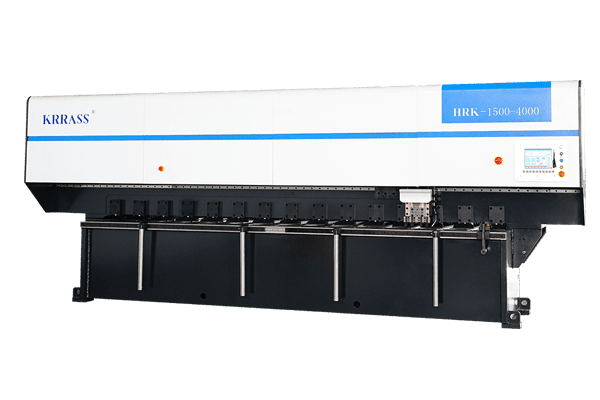
3.Optimizing V-Grooving: Strategies for Precision and Efficiency
I.The Art of Groove-Cutting: A Symphony of Precision and Control
A. The Crucial Role of Tool Selection and Calibration
1. The Geometry of the V-Grooving Tool
The journey towards process optimization in V-grooving begins with the selection of the right tool. The geometry of the tool, including parameters such as the tool angle, rake angle, and clearance, plays a pivotal role in ensuring clean and accurate grooves. The tool angle, for instance, should be chosen based on the desired groove angle and the material’s hardness. The rake angle, which influences the cutting force and chip formation, should be optimized to prevent excessive tool wear and heat generation. Lastly, the clearance angle, which prevents the tool’s non-cutting parts from rubbing against the workpiece, should be sufficient to avoid premature tool wear and poor surface finish.
2. Monitoring Tool Wear: A Proactive Approach
Regular inspection of tool wear is a critical aspect of maintaining the quality of the grooves. Dull or damaged tools can compromise the groove’s accuracy and finish, leading to subpar results. Implementing a predictive maintenance strategy can help replace tools before their performance deteriorates, ensuring consistent quality and reducing downtime.
B. Material Considerations: Hardness and Thickness
1. Material Hardness: A Key Determinant of Cutting Parameters
Different metals exhibit varying levels of hardness, which significantly impacts the cutting parameters. Harder materials may require slower feed rates and lower depths of cut to prevent excessive tool wear and heat buildup. Therefore, understanding the material’s hardness and adjusting the cutting parameters accordingly is crucial for process optimization in V-grooving.
2. Material Thickness: Balancing Robustness and Heat Management
Thicker sheets demand robust tools and stable machines. However, they also pose a challenge in terms of heat management. Optimizing the groove depth is essential to prevent excessive heat buildup, which can lead to material distortion and tool damage.
II. Strategies for Consistent Results: Balancing Speed, Accuracy, and Stability
A. Cutting Parameters: Feed Rates and Depth of Cut
1. Feed Rates: Striking a Balance
Fine-tuning the feed rates is a delicate balancing act between material removal and heat generation. High feed rates may lead to rapid tool wear or heat-related distortions in the workpiece. Therefore, the feed rate should be optimized to ensure efficient material removal while managing heat effectively.
2. Depth of Cut: A Direct Impact on Bending Accuracy
The depth of the groove directly impacts the bending accuracy of the workpiece. A groove that is too shallow may result in a bend that doesn’t align properly, while a groove that is too deep may lead to heat-induced warping. Therefore, the depth of cut should be carefully controlled to ensure accurate bending without compromising the workpiece’s integrity.
B. Machine Rigidity and Stability: Calibration and Vibration Control
1. Machine Calibration: Ensuring Accuracy
Regular calibration of the V-grooving machine is essential to maintain its accuracy. Misaligned components can introduce deviations in the groove’s dimensions, leading to inaccuracies in the final product. Therefore, a rigorous calibration routine should be implemented to ensure the machine’s components are always aligned correctly.
2. Vibration Control: Minimizing Disruptions
Stabilizing the machine to minimize vibrations during groove cutting is crucial for maintaining the groove’s quality and dimensional accuracy. Vibrations can lead to irregularities in the groove’s dimensions and surface finish, compromising the final product’s quality. Therefore, effective vibration control measures should be implemented to ensure a smooth and stable cutting process.
C. Coolant and Lubrication: Managing Heat and Friction
1. Coolant Application: Dissipating Heat
Applying coolant during groove cutting is essential to dissipate heat effectively. Proper coolant flow prevents tool overheating and material distortion, ensuring the quality of the groove and prolonging the tool’s lifespan.
2. Mist Cooling: A Fine Balance
Mist coolant systems, which release fine droplets of coolant, can effectively cool the tool and workpiece without flooding the area. This method provides efficient heat management while keeping the work area clean and safe.
III. Monitoring and Quality Assurance: Ensuring Consistency and Reliability
A. Real-Time Sensors: Keeping a Finger on the Pulse
1. Temperature Sensors: Detecting Heat Anomalies
Installing sensors near the cutting edge to monitor the tool’s temperature can provide valuable real-time feedback. Abnormal spikes in temperature can signal potential issues, such as excessive tool wear or inadequate coolant flow, allowing for timely intervention.
2. Force Sensors: Tracking Cutting Forces
Measuring the cutting forces during groove formation can provide insights into the cutting process’s efficiency and stability. Sudden variations in cutting forces may indicate tool wear or material inconsistencies, triggering the need for further investigation.
B. Post-Grooving Inspection: Verifying Quality and Accuracy
1. Microstructural Analysis: Assessing Material Integrity
Examining the metal’s microstructure after groove cutting can reveal important information about the material’s integrity. Factors such as grain growth, phase changes, or residual stresses should be evaluated to ensure the material’s properties have not been adversely affected by the grooving process.
2. Dimensional Verification: Ensuring Accuracy
Meticulous measurement of bend angles and dimensions is crucial for verifying the accuracy of the grooving process. Deviations beyond acceptable tolerances warrant further investigation and may indicate the need for process adjustments.
In conclusion, process optimization in V-grooving involves a symphony of precision and control, balancing various factors to achieve consistent, high-quality results. By carefully selecting and calibrating tools, understanding material properties, fine-tuning cutting parameters, ensuring machine stability, managing heat with effective coolant application, and implementing rigorous monitoring and quality assurance practices, one can master the art of V-grooving. This meticulous approach ensures that each groove is not just a cut in the material, but a testament to precision, control, and craftsmanship.
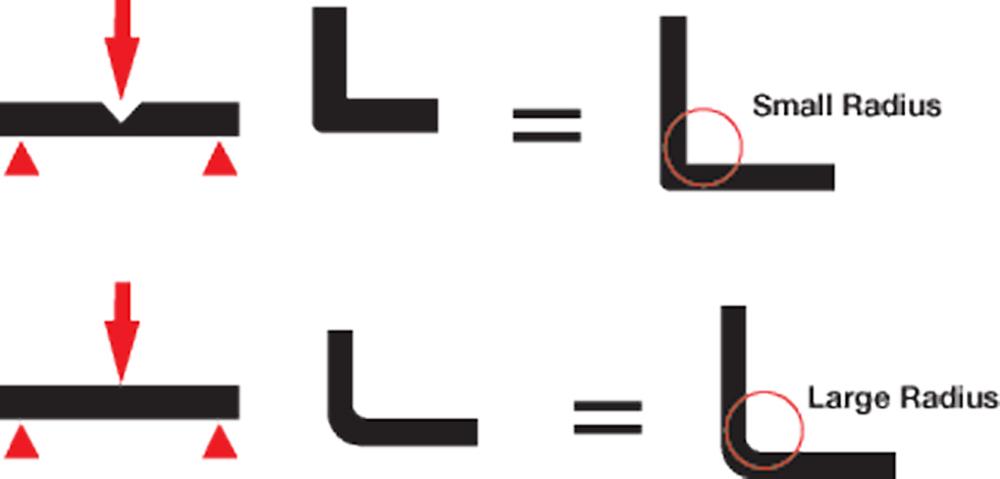
4.Material Thickness Management in Optimizing V-Groove Precision
The Challenge of Material Thickness in V-Grooving
One of the primary challenges in the V-groove bending process is the management of material thickness. The V-groove process involves the strategic removal of material to create a groove, which inherently weakens the metal at the bend line. This delicate balance of ensuring that the remaining material is thick enough to maintain the structural integrity of the piece while still allowing for a clean bend is a testament to the precision required in V-grooving.
The Art of Balancing Material Thickness and Structural Integrity
The V-groove bending process is a delicate dance between maintaining the structural integrity of the material and achieving the desired bend. The process involves removing material to create a groove, which inherently weakens the metal at the bend line. The challenge lies in ensuring that the remaining material is thick enough to maintain the structural integrity of the piece, yet thin enough to allow for a clean, sharp bend. This balance is not easily achieved and requires a deep understanding of the material properties and the bending process.
The Role of Material Thickness in Achieving Precision in V-Grooving
In the world of V-grooving, precision is king. The ability to create sharp, clean bends is directly tied to the management of material thickness. By strategically removing material to create a groove, the V-groove process reduces the material’s resistance to bending, allowing for sharper angles with a smaller radius. However, this process inherently weakens the metal at the bend line, and ensuring that the remaining material is thick enough to maintain the structural integrity of the piece is a critical aspect of the process. This delicate balance is what makes V-grooving such a precise and highly sought-after bending technique.
In conclusion, the management of material thickness is a critical aspect of optimizing precision in V-grooving. By understanding the delicate balance between material removal and structural integrity, manufacturers can leverage the V-groove process to create parts with unparalleled precision and consistency. With its ability to manage material thickness effectively, V-grooving stands as a testament to the advancements in modern manufacturing techniques. It is a clear choice for manufacturers seeking to improve the quality and efficiency of their fabrication processes.
5.Consistency in Dimensional Integrity: Optimizing V-Groove Precision
I. The Quintessence of Precision in V-Grooving
A. Material Thickness and Its Paramountcy
Uniformity in Material Selection: The cornerstone of V-grooving precision lies in the uniformity of material thickness. Discrepancies in this fundamental parameter can precipitate variances in groove dimensions, thereby undermining the component’s integration and functional efficacy. Engineers are tasked with the judicious selection of material thickness, harmonizing considerations such as the material’s load-bearing aptitude, structural fortitude, and manufacturability with the application’s exigencies.
B. Tool Geometry and Its Critical Influence
Optimal Tool Configuration: The geometry of V-grooving tools is instrumental in the quest for precision. The panoply of tool shapes and angles available necessitates a strategic selection process, where the tool’s material composition, rake angle, and clearance angle are meticulously matched to the task at hand. The prevalent use of High-speed steel (HSS) or carbide tools in V-grooving is a testament to their efficacy in achieving high-quality grooves.
C. Machine Rigidity and Calibration
Ensuring Machine Stability: The rigidity of the machine tool is a direct contributor to the fidelity of groove dimensions. Any mechanical laxity or vibrational interference during the cutting process can engender deviations from the intended measurements. It is imperative that regular calibration and scrupulous maintenance protocols are established to safeguard the consistency of results.
II. Strategies for Enhancing V-Groove Precision
A. Geometric Accuracy
Ensuring Planar Uniformity: The geometric accuracy of V-grooving hinges on the planar uniformity of the material surface. A flawlessly flat surface guarantees an even interface between the cutting tool and the workpiece, which is crucial for maintaining groove consistency. Moreover, the adherence to parallelism is vital to ensure that the groove’s trajectory remains congruent with the material’s edges, thus averting any potential distortion during subsequent bending processes.
Maintaining Cylindrical Precision: The integrity of roundness and cylindricity within the grooves is non-negotiable. Any aberrations in these geometric parameters can precipitate misalignment issues during the assembly phase. The deployment of advanced measurement methodologies, such as laser profilometry, is instrumental in the quantification and assurance of these critical dimensions.
B. Surface Integrity
Achieving Optimal Surface Finish: The surface roughness of the groove plays a pivotal role in minimizing friction during the bending and assembly stages. The judicious selection of tools, coupled with the fine-tuning of feed rates and the strategic application of coolants, is essential in attaining a surface finish that meets the stringent requirements of the industry.
Addressing Residual Stress and Metamorphic Layers: The process of V-grooving inherently induces residual stresses within the material, which must be managed with precision. Additionally, the metamorphic layers that form during the cutting process can alter the material’s inherent properties. The implementation of heat treatment and stress relief procedures is critical in mitigating the effects of these phenomena.
C. Vibration Errors
Mitigating Temperature-Vibration Displacement: Vibrations present during the cutting phase have the potential to alter the dimensions of the groove, an effect that can be exacerbated by temperature variations. The meticulous control of the ambient temperature and the minimization of vibrations are paramount in enhancing the precision of V-grooving operations.
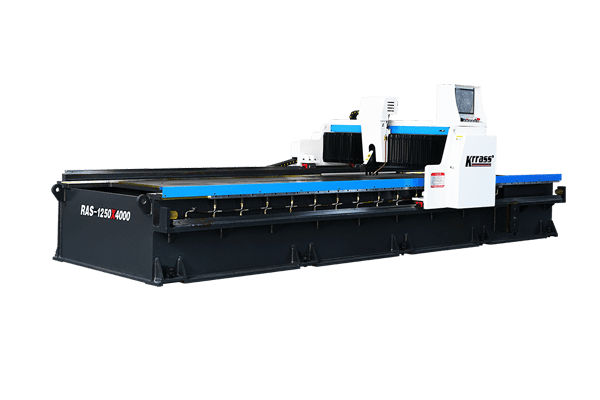
6.Heat Management in V-Grooving: Ensuring Precision Amidst Temperature Challenges
In the intricate dance of metal fabrication, where precision meets creativity, heat management emerges as a critical partner. V-grooving, with its precise groove-cutting technique, relies on maintaining optimal temperatures to ensure consistent bends. In this segment, we delve into the nuances of heat management within the realm of V-grooving, exploring its impact on material properties, tool longevity, and overall quality.
I. The Heat Conundrum
A. Tool-Workpiece Interaction
When V-grooving, the interaction between the cutting tool and the metal sheet generates heat. This heat can influence the material’s mechanical properties, including hardness, ductility, and grain structure. Controlling this heat is essential to prevent undesirable alterations in the metal.
B. Material Sensitivity
Different metals exhibit varying sensitivities to heat. Aluminum, for instance, dissipates heat rapidly, while stainless steel retains it. Understanding the behavior of the specific material being grooved is crucial. Heat management strategies must adapt accordingly.
II. Strategies for Effective Heat Management
A. Tool Selection
- Coolant-Driven Tools: Consider using V-grooving tools equipped with built-in coolant channels. These channels direct coolant (often a mixture of water and oil) to the cutting edge, dissipating heat during the groove-cutting process.
- High-Speed Steel (HSS): HSS tools are known for their ability to withstand elevated temperatures. Their composition includes tungsten, molybdenum, and vanadium, providing excellent heat resistance.
B. Cutting Parameters
- Speed and Feed Rates: Optimize cutting speeds and feed rates to strike a balance between efficient material removal and controlled heat generation. High speeds may lead to excessive heat, affecting the material’s integrity.
- Depth of Cut: Adjust the groove depth judiciously. Deeper cuts generate more heat. A shallower groove may be preferable for heat-sensitive materials.
C. Lubrication and Cooling
- Coolant Application: Regularly apply coolant during the groove-cutting process. The coolant dissipates heat, lubricates the tool, and flushes away chips.
- Mist Cooling: Mist coolant systems release fine droplets, effectively cooling the tool and workpiece without flooding the area.
D. Machine Considerations
- Machine Rigidity: A stable machine minimizes vibrations, which can lead to localized heat buildup. Rigorous maintenance ensures optimal performance.
- Heat-Resistant Components: Insulate critical machine components (such as bearings and guides) to prevent heat transfer.
III. Monitoring and Quality Assurance
A. Temperature Sensors
- Tool Temperature: Integrate temperature sensors near the cutting edge. Real-time monitoring alerts operators to any abnormal heat spikes.
- Workpiece Temperature: Non-contact infrared sensors measure workpiece temperature, aiding in process control.
B. Post-Grooving Inspection
- Microstructural Analysis: Examine the metal’s microstructure post-grooving. Any heat-induced changes (such as grain growth or phase transformations) should raise red flags.
- Dimensional Verification: Measure the bend angles and dimensions meticulously. Deviations may indicate heat-related distortions.
7.Maintenance and Feedback Loops
I. The Imperative of Regular Maintenance in V-Grooving Operations
A. Diligent Tool and Machine Care
Scheduled Inspections: The cornerstone of maintaining the integrity of V-grooving operations lies in the systematic examination of tools and machinery. This proactive approach involves a meticulous search for signs of deterioration, misalignment, or any form of damage. It is imperative that such issues are rectified expeditiously to avert any compromise in the quality of the grooves produced.
Lubrication and Cleaning: The lifeblood of any precision tool’s operation is adequate lubrication, which facilitates unimpeded tool movement and significantly reduces the generation of heat through friction. Concurrently, maintaining an immaculate environment is paramount in preventing the accumulation of debris, which can be detrimental to the machine’s precision.
B. Precision-Driven Machine Calibration
Alignment Checks: Regular calibration of the V-grooving machine is not just a recommendation; it is a necessity. Even the slightest misalignment of components can be the harbinger of inconsistent groove depths and angles, leading to subpar outcomes.
Tool Replacement Strategy: The adoption of predictive maintenance protocols allows for the timely replacement of tools that are on the brink of failure, ensuring that groove accuracy is never jeopardized.
II. Cultivating Expertise Through Staff Training
A. Mastery of Technical Proficiency
Understanding V-Grooving Principles: It is essential for operators to have a profound understanding of the principles underlying V-grooving, including groove geometry, the behavior of materials under stress, and the critical cutting parameters. Such knowledge is the bedrock upon which informed and strategic adjustments are made.
Material Sensitivity Training: Different materials exhibit unique characteristics; hence, it is crucial for staff to be adept at recognizing these nuances. Metals such as aluminum, stainless steel, and various alloys each require a bespoke approach to V-grooving.
B. Enhancing Process Optimization
Fine-Tuning Operational Parameters: Operators are tasked with the critical role of optimizing the feed rates, depth of cut, and tool speeds. This delicate balancing act between material removal and heat management is pivotal in achieving consistent and high-quality results.
Heat Management Education: An in-depth understanding of the thermal effects during the V-grooving process is vital. Heat can significantly alter the properties of the material being worked on, and thus, maintaining a stringent control over temperature is essential.
III. Upholding Precision with Quality Control Measures
A. Rigorous Groove Inspection
Uniformity Checks: The implementation of rigorous quality control protocols throughout the production process is non-negotiable. Each grooved line must be scrutinized for uniform depth and angle, as any deviation could indicate underlying process irregularities.
Dimensional Verification: The precision of bend angles must be measured with painstaking accuracy. It is in these minute details that the true precision of the V-grooving process is manifested.
B. In-Depth Microstructural Analysis
Post-Grooving Examination: A thorough examination of the metal’s microstructure post-grooving can yield valuable insights. Observations of grain growth, phase changes, and residual stresses can serve as indicators of the overall quality of the groove.
Surface Finish Assessment: Beyond the technical aspects, the aesthetic appeal of the grooved surface is also of significant importance. An assessment of surface roughness and finish is crucial in ensuring that the final product is not only functionally superior but also visually pleasing.
IV. Amplifying Excellence Through a Feedback Loop
A. Valuing Operator Input
Encouraging Issue Reporting: It is vital to establish a culture where operators feel empowered to report any issues they encounter. Their direct experience with the machinery can often reveal subtle deviations that might otherwise go unnoticed.
Suggestion Box Initiative: A suggestion box serves as a platform for operators to contribute ideas for process improvement. Those who work closely with the machinery frequently identify opportunities for optimization that may not be apparent to others.
B. Commitment to Iterative Enhancements
Incremental Adjustments: Operator feedback should be leveraged to make incremental adjustments to the V-grooving process. These small, yet strategic, changes can accumulate over time to yield substantial improvements in the overall process.
Continuous Learning Environment: An environment that promotes continuous learning is essential. Regular training sessions ensure that operators remain abreast of the latest best practices and technological advancements in the field of V-grooving.
In conclusion, the importance of regular employee maintenance and the establishment of feedback loops in the context of V-grooving cannot be overstated. These practices are the linchpins of operational excellence, ensuring that the highest standards of precision and quality are consistently met. The keyword ‘V Grooving’ encapsulates a complex and nuanced process that demands a high degree of technical skill, attention to detail, and a commitment to continuous improvement. By adhering to these principles, organizations can ensure the longevity of their equipment, the expertise of their staff, and the satisfaction of their clients.
Conclusion
In conclusion, the evolution and capabilities of V Grooving machines signify a monumental leap in metal fabrication. As industries continue to evolve, the demand for precision and efficiency makes V Grooving technology indispensable. To learn more about metalworking machines, visit our tutorials, or visit the KRRASS supplier discovery platform to find potential sources or view details for a specific product.


